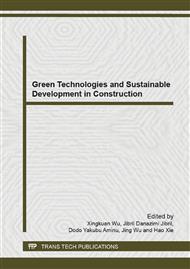p.142
p.146
p.151
p.155
p.159
p.163
p.168
p.172
p.176
Extreme Value Analysis and Joint Densities of Wind Directionality, Wind Speed and Wave Height for Malaysian Waters
Abstract:
Prediction of extreme environmental loadings is crucial in the design of offshore platforms. Combinations of independent 100-year loadings are usually used assuming that it will bring the maximum value that is suitable for the design. It is rather impossible for such independent combinations to occur at the same time. Addressing this issue requires approaches in two methods. The first would be to find the probabilities of joint effect of these parameters, while the second would be to forecast the extreme value of each parameter. Joint densities and extreme value analysis have become available due to significant advancements in fluid dynamics and computer science. By using the combination of these two techniques, the actual loading of wind and wave can be obtained, leading to optimum and robust design.
Info:
Periodical:
Pages:
159-162
Citation:
Online since:
May 2014
Authors:
Keywords:
Price:
Сopyright:
© 2014 Trans Tech Publications Ltd. All Rights Reserved
Share:
Citation:


